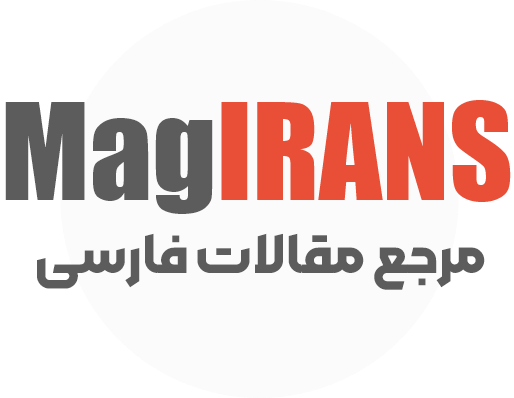بخشی از پاورپوینت
اسلاید 1 :
متابولیسم پروتئین ها و اسیدهای آمینه:
اسلاید 2 :
گردش پروتئین در بدن
اسلاید 3 :
سرنوشت عامل آمین
سرنوشت اسکلت کربنی
سرنوشت کاتابولیک اسیدهای آمینه
اسلاید 4 :
سرنوشت عامل آمین
آمونیاک ترکیب بسیار سمی برای بدن بوده و ازدیاد آن در خون سبب بروز پدیده هایپرآمونمی hyperammonemiaشده که سبب بروز علائم شدیدی در سیستم عصبی
اسلاید 5 :
TRANSAMINATIONترانس آمیناسیون اسیدهای آمینه
اسلاید 6 :
انتقال گروه آمین در بدن انسان
اسلاید 7 :
The urea cycle
also known as the ornithine cycle, is a cycle of biochemical reactions occurring in many animals that produces urea ((NH2)2CO) from ammonia (NH3).
This cycle was the first metabolic cycle discovered (Hans Krebs and Kurt Henseleit, 1932), five years before the discovery of the TCA cycle.
In mammals, the urea cycle takes place primarily in the liver, and to a lesser extent in the kidney.
اسلاید 8 :
Step 1
First step combines CO2 and NH4+ to form carbamoyl phosphate
Reaction requires ATP and H2O
Takes place in the mitochondria
Catalyzed by carbamoyl phosphate synthase
22.8 The Urea Cycle
اسلاید 9 :
گروه های آمین کاربامیل فسفات می تواند از منشاء ترکیبات زیر که به کبد می رسند تشکیل گردد:
مقدار اندکی آمونیاکی که از طریق سیاهرگ بابی به کبد می رسد.
گلوتامین که عامل آمین حاصل از اکثر بافت ها را در خون حمل می کند.
آمینواسیدهایی که در بافت کبد شکسته می شوند آمین خود را به شکل گلوتامات منتقل می کنند.
از بافت عضلانی انتقال آمین به شکل اسید آمینه آلانین انجام می شود.
اسلاید 10 :
Step 2
Carbamoyl phosphate condenses with the amino acid ornithine to produce the amino acid citrulline
Occurs in the mitochondria
Catalyzed by ornithine transcarbamoylase
اسلاید 11 :
Step 3
Citrulline is transported to the cytoplasm
Condenses with aspartate to produce argininosuccinate
Catalyzed by argininosuccinate synthase
Requires energy released by ATP hydrolysis
اسلاید 12 :
Step 4
Argininosuccinate cleaved to produce the amino acid arginine and fumarate of the citric acid cycle
Reaction catalyzed by argininosuccinate lyase
اسلاید 13 :
Step 5
Final reaction hydrolyzes arginine to generate urea – the reaction product that is excreted
Reaction also regenerates ornithine, the original reactant in the cycle
Reaction is catalyzed by arginase
اسلاید 14 :
Urea Cycle
Aspartate and carbamoyl phosphate each deliver an amino group to the cycle.
Notice that the carbamoyl phosphate production and condensation occur in the mitochondrial matrix.
اسلاید 15 :
بخشی از سیکل اوره در سیتوپلاسم وبخشی در میتوکندری است
1 L-Ornithine2 carbamoyl phosphate3 L-citrulline4 argininosuccinate5 fumarate6 L-arginine7 urea
اسلاید 16 :
Regulation
N-Acetyl glutamic acid
The synthesis of carbamoyl phosphate and the urea cycle are dependent on the presence of NAcGlu, which allosterically activates CPS1.
Synthesis of NAcGlu by NAGS, is stimulated by both Arg, and Glu, both of which are elevated when free amino acids are elevated.
So, Arg is not only a substrate for the urea cycle reactions but also serves as an activator for the urea cycle.
اسلاید 17 :
Normal level of Blood Urea
BUN( Blood Urea Nitrogen):
7–21 mg/dL
Urea [mg/dL]= BUN [mg/dL] * 2.14
Urea= 15- 45
اسلاید 18 :
Urea cycle disorders: در خون اوره کاهش یافته – آمونیاک (NH4+) افزایش
Anomalies of the urea cycle:
N-Acetylglutamate synthase deficiency
Carbamoyl phosphate synthetase deficiency
Ornithine transcarbamoylase deficiency
Hyperornithinemia, hyperammonemia, homocitrullinuria syndrome (HHH syndrome, ornithine translocase deficiency)
Citrullinemia
Argininosuccinic aciduria
Argininemia
http://www.ureacycle.com/انیمیشن این سایت را ببینید:
اسلاید 20 :
افزایش اوره:
Azotemia: elevated conc. of urea in blood
Very high plasma urea concentration accompanied by renal failure is called uremia, or the uremic syndrome
Causes of urea plasma elevations are:
Prerenal
Renal
and postrenal

